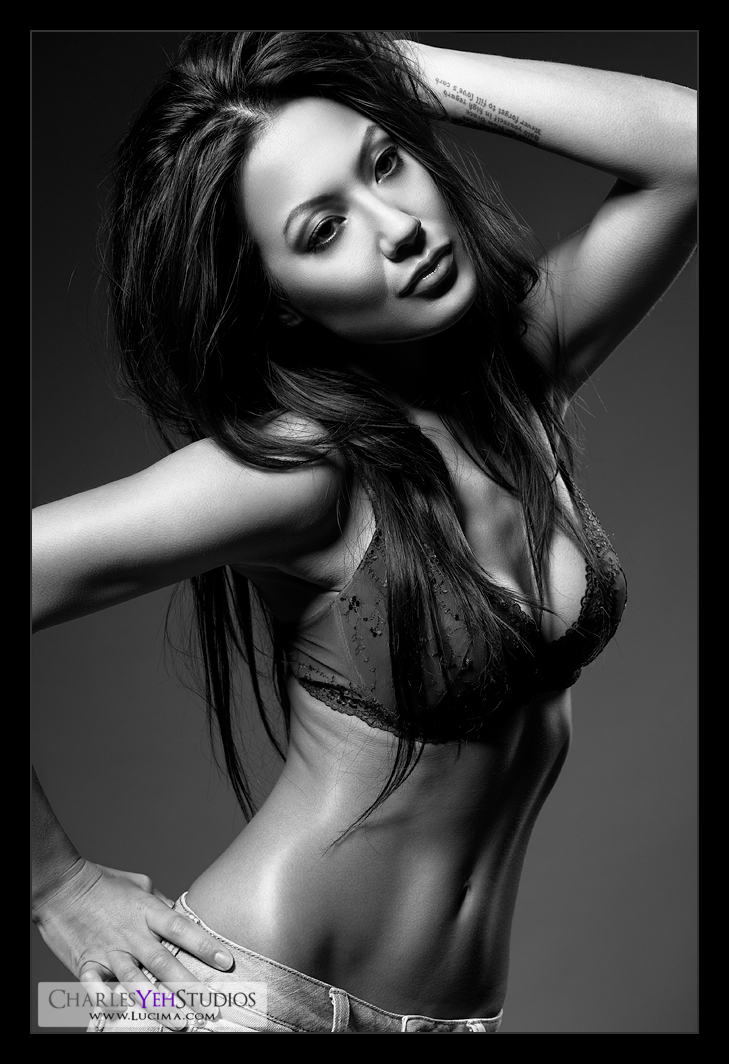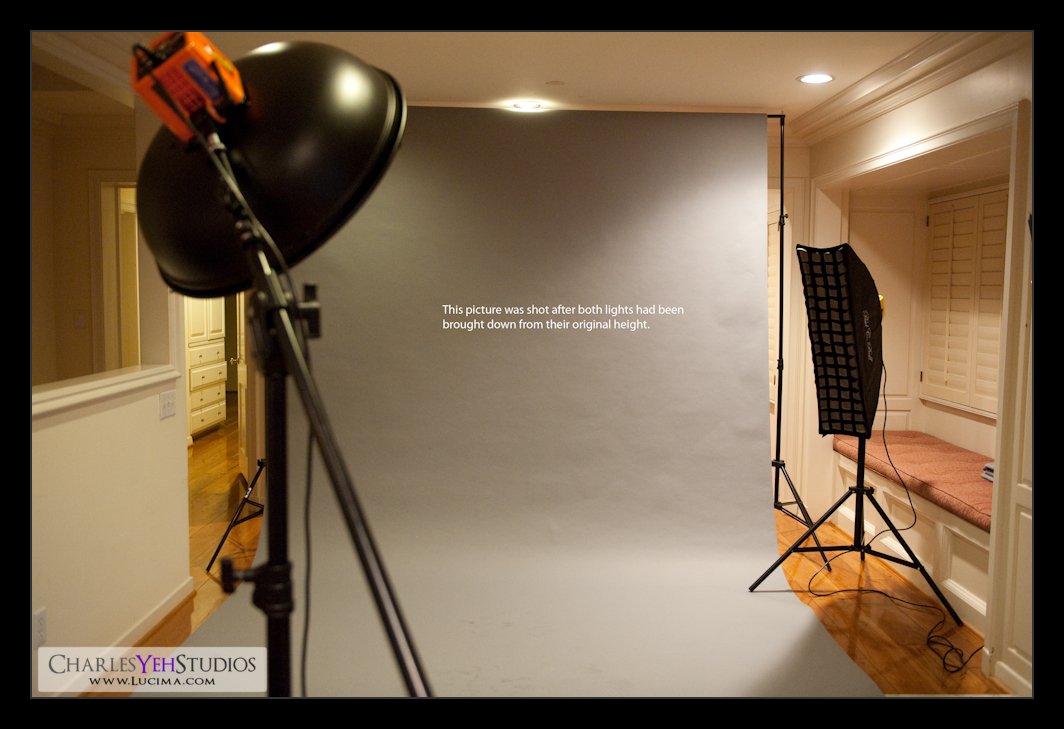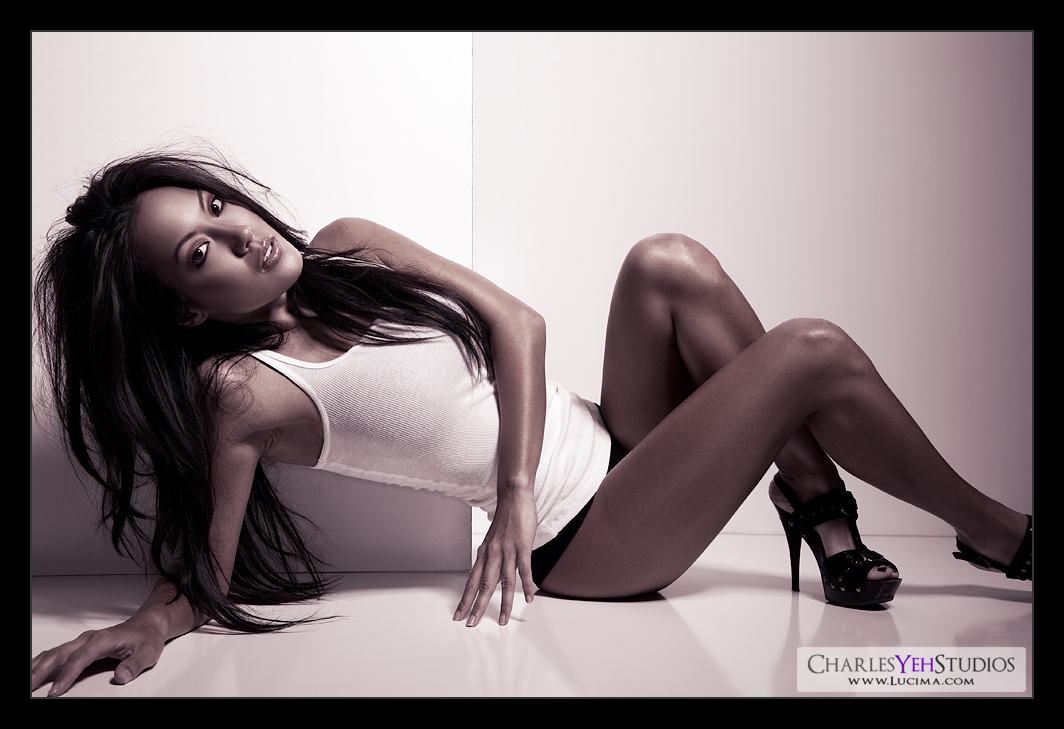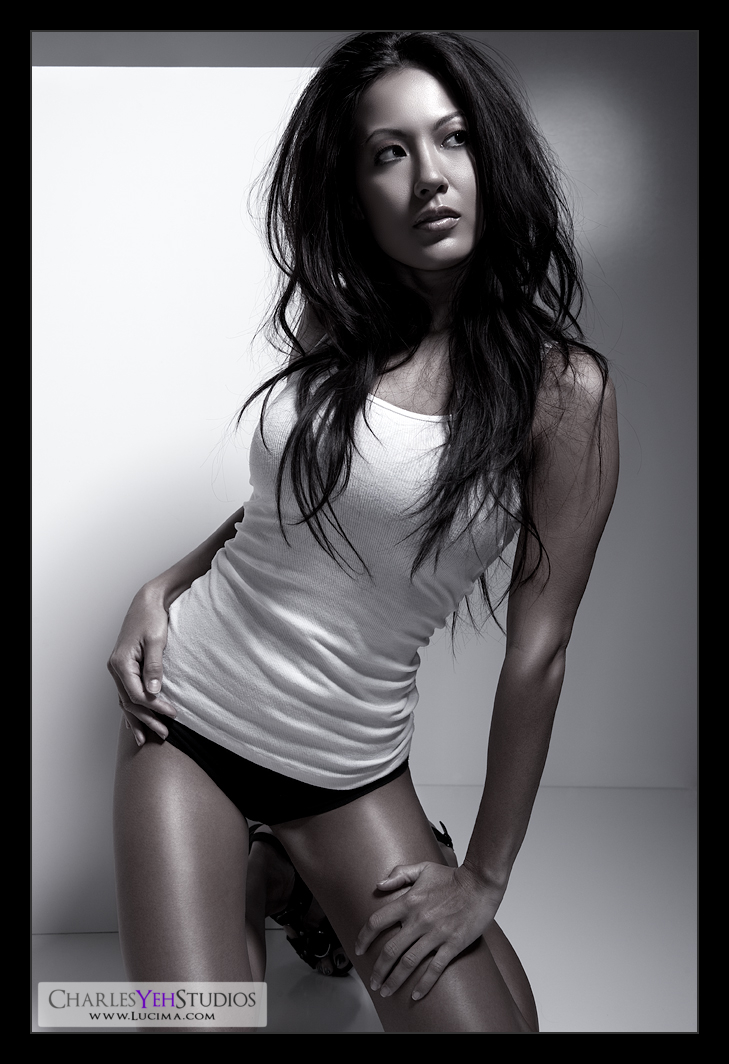Anneliese: Almost
I should have just made it B&W, no point leaving it slightly color because now it just look like her skin has no color. Fly-away hairs are killing me but impossible to retouch due to the gradient background. One or two I can do but too many with this hair style. Next time we'll just do a cleaner hairstyle.
Camera: D3/85mm f/1.4D, 1/200th, f/7.1, ISO200
Strobist: AB800 in 40º gridspot from camera upper (slightly right)
Model: Anneliese Nicole
Makeup: Kelli Zehnder
Hair: Michelle Green
Anneliese: Return of Color
No levels adjustment. Full tonal range on frame. I love this picture.
Camera: D3/24-70mm f/2.8G @70mm, 1/200th, f/8.0, ISO200
Strobist: AB800 in 40º gridspot from camera upper left
Model: Anneliese Nicole
Makeup: Kelli Zehnder
Hair: Michelle Green
Rebekah: Blue
2 days. Influenced by Anneliese's Return of Color. Originally more desaturated. Came back with more color. Original crop.
Camera: D3/24-70mm f/2.8G @48mm, 1/200th, f/9, ISO200
Strobist: AB800 in 40º gridspot beauty dish camera high (slightly right?)
Model: Rebekah Davis
Makeup/Hair: Kelli Zehnder


























